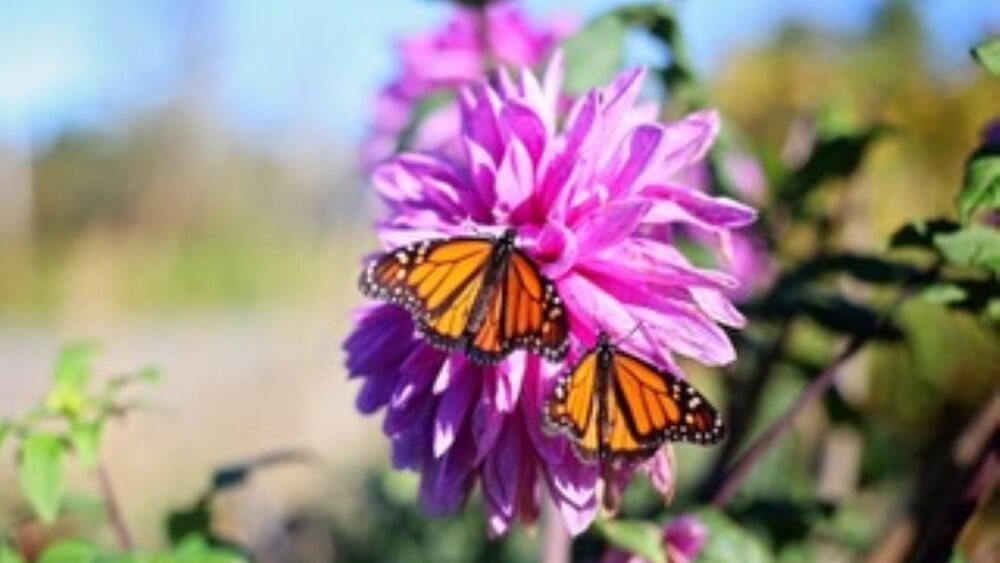Each spring, monarch butterflies return to the Eastern United States + southern Canada after wintering at sites that range from California to Central America. And it’s that time again.
Monarchs begin their journey north as temperatures warm in March. When they reach the southern United States, they malt and lay eggs. When the new generation hatches, they migrate too, reaching Canada in early to mid-June.
An interactive map from Journey North lets you track and report butterfly sightings in our region. Scientists use the tracking information provided by volunteers to better understand the monarch’s conservation needs.
Did you know? Urbanization and deforestation have reduced the number of resources that monarchs need to make their journey. To help support the butterflies during their migration period, conservation enthusiasts are encouraged to set up conservation waystations in home gardens, nature centers, schools, or even along roadsides or unused land.
A simple way individuals can contribute to the effort is by adding native milkweeds and nectar sources to their home gardens. To find milkweed, check your local nursery – or you can request seeds from the South Carolina Wildlife Federation. Native milkweed species in the south include aquatic milkweed, white milkweed, and butterfly milkweed.

